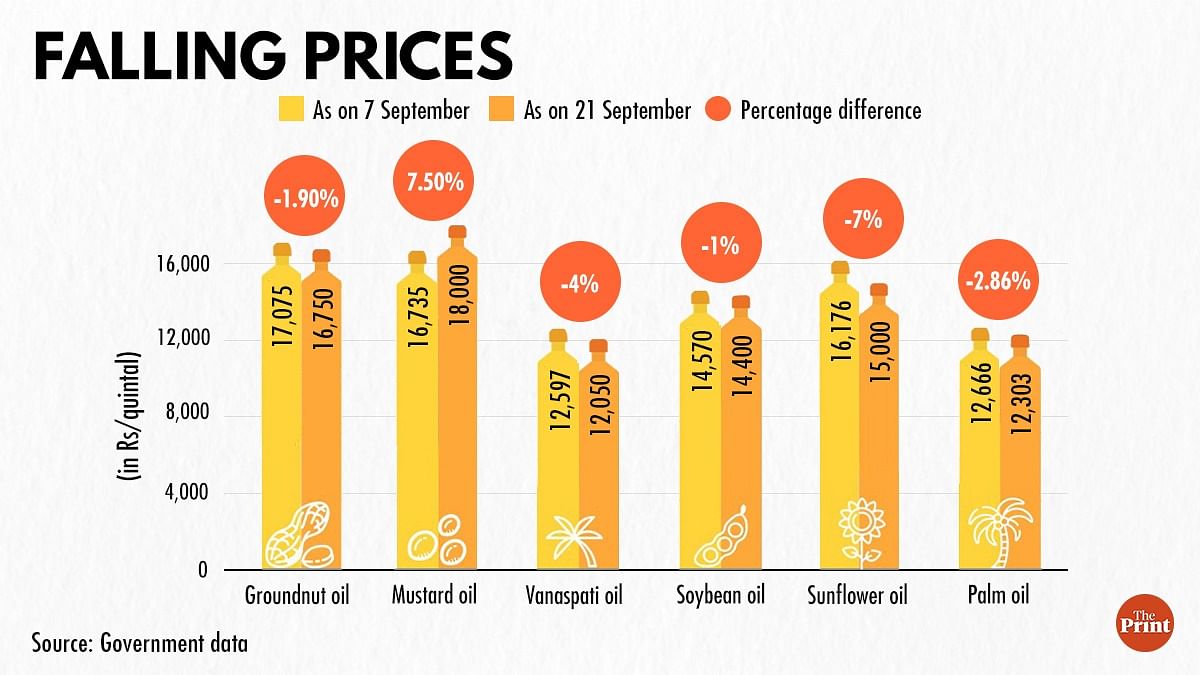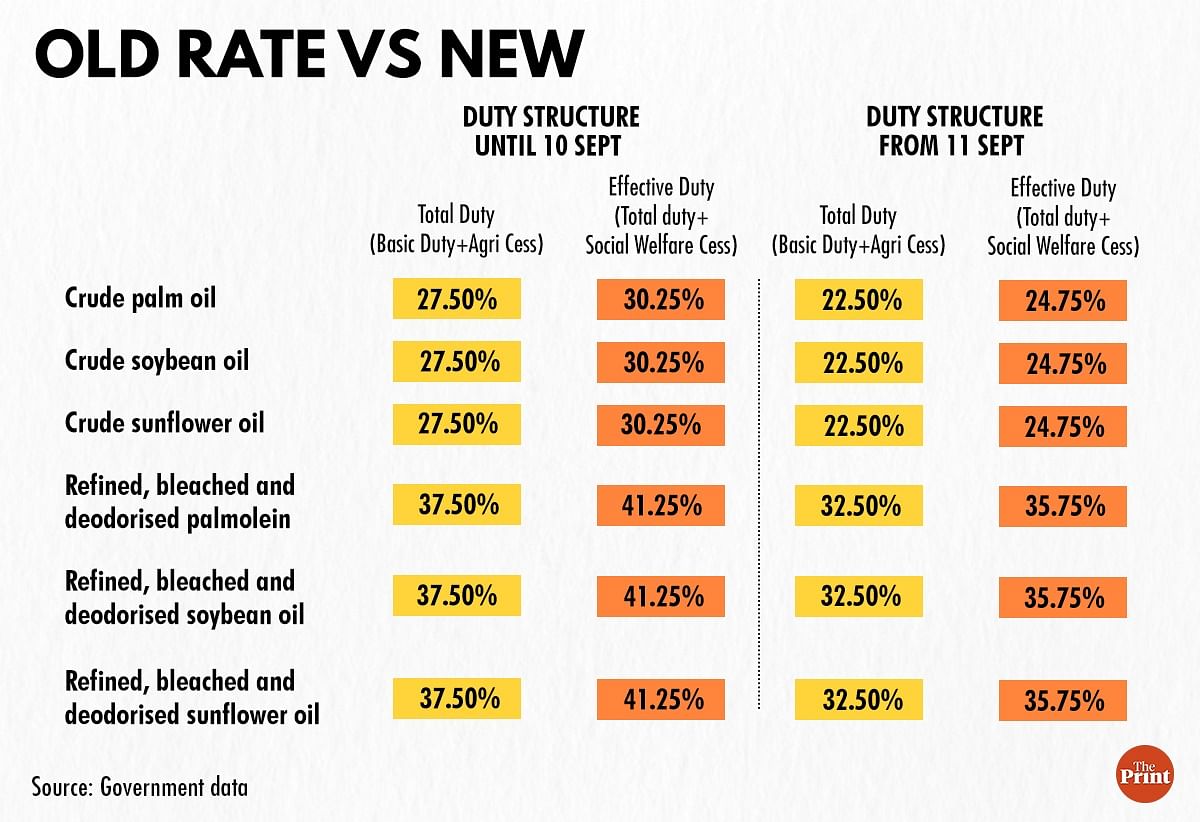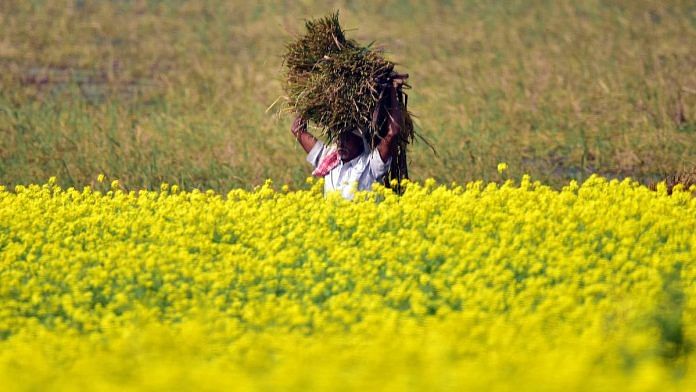New Delhi: The price of most edible oils has decreased by up to 7 per cent over the past two weeks on the back of a series of import duty cuts, bucking the usual festive-period trend of cost spurts.
Approximately 60 per cent of India’s edible oil demand is fulfilled by imports. These primarily constitute crude and refined forms of palm, soybean and sunflower oils.
As many as four import duty cuts were effected with respect to the three edible oils between June and September, following a sharp rise in prices over the preceding months. In the same period, the import rules for palm oil were also eased, in another bid to check price rise.
The first of the duty cuts was introduced by the central government on 29 June, when the standard rate of duty on crude palm oil was reduced. The latest came on 10 September, when the standard rate of duty on crude palm oil was reduced to 2.5 per cent from 10 per cent, and on crude sunflower and soybean to 2.5 per cent from 7.5 per cent. The duty on refined versions of all three oils was cut to 32.5 per cent from 37.5 per cent.
This has, in turn, also helped cool off the price of vanaspati, a cheaper ghee variant and household staple derived from palm oil.
According to daily commodity price data from the Department of Consumer Affairs, the price of sunflower oil had dipped to Rs 15,000/quintal on 21 September from Rs 16,176/quintal on 7 September, a fall of 7 per cent, the highest. The price of palm oil, meanwhile, fell nearly 3 per cent to Rs 12,303/quintal from Rs 12,666 in the same period (see graphic for more).

Mustard oil, which is among the major oilseeds produced in India, is the sole outlier in this trend, with its price increasing by 7.5 per cent in the same period.
Experts attribute this to the disruption caused by the pandemic, which they say overtook the expected impact of a healthy crop output this year.
Government estimates suggest the successive reductions in import duty — the latest of which came on 10 September — amount to Rs 4,600 crore.

Also Read: Oil price paradox: Why Modi govt is alarmed by edible oil prices but not petrol & diesel
The mustard exception
The average wholesale price of mustard, however, increased between 7 September and 21 September. Experts say this is because mustard seeds haven’t reached the market in desired quantities despite a healthy crop.
“Mustard oil rates have seen the most fluctuation and rise in the domestic market, despite a healthy crop output for the season in February and March,” said Shammi Agarwal, managing director of Pansari Group, a leading conglomerate dealing in edible oils.
“The disruption in logistics and manpower supply caused by the pandemic and countrywide lockdown made way for poor circulation and sales for the season’s mustard seeds and mustard oil.”
According to Agarwal, a “sudden surge in mustard seed oil demand made the market drain its mustard seed resources, causing the rate to skyrocket”.
“Until the new crop cycle is harvested, we will not witness a sudden drop in edible oil rates. Therefore, the government has taken the step to reduce import duties on edible oil. However, the expected change in rates will be seen once the new crop is harvested depending on the quantity and quality of the produce,” he added.
(Edited by Sunanda Ranjan)
Also Read: Why Modi govt push for atmanirbharta in palm oil production could come at a cost to environment



